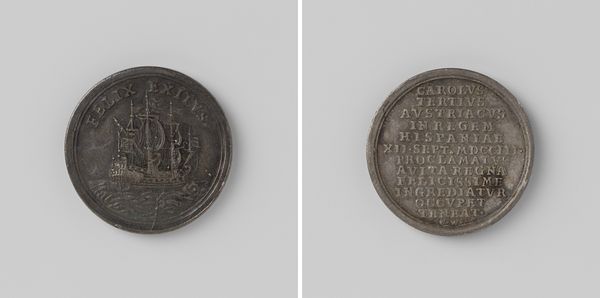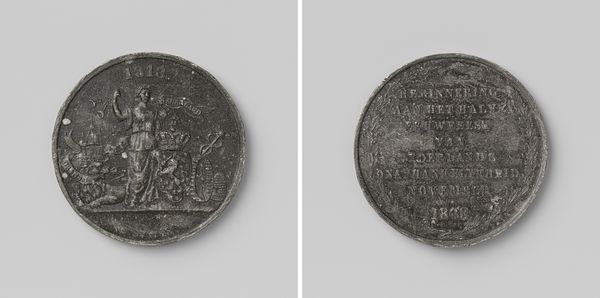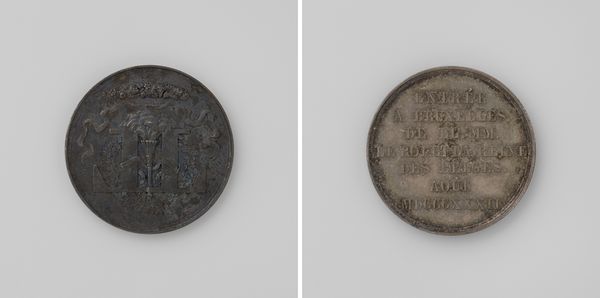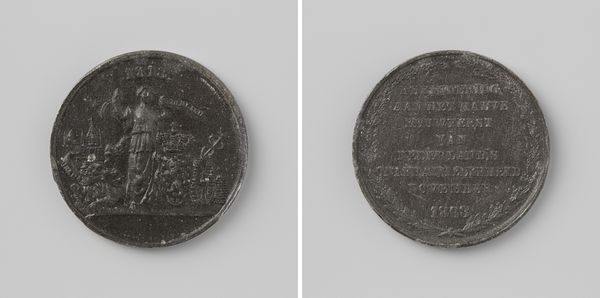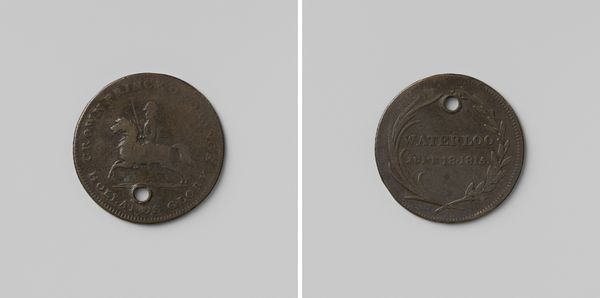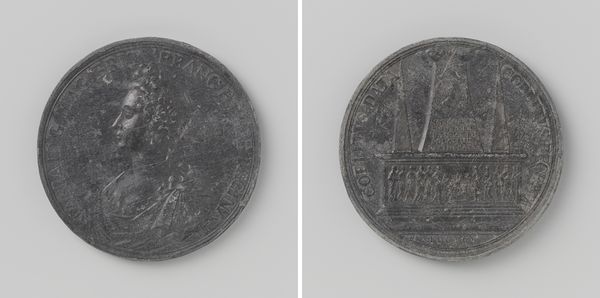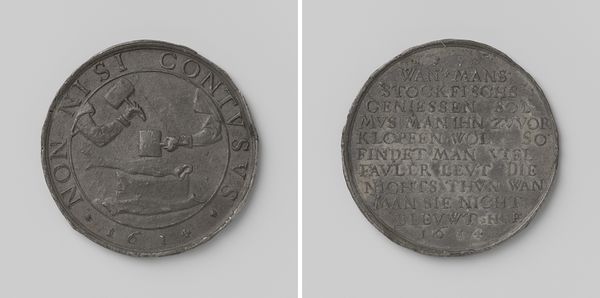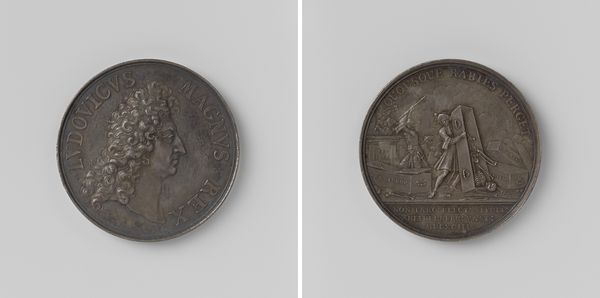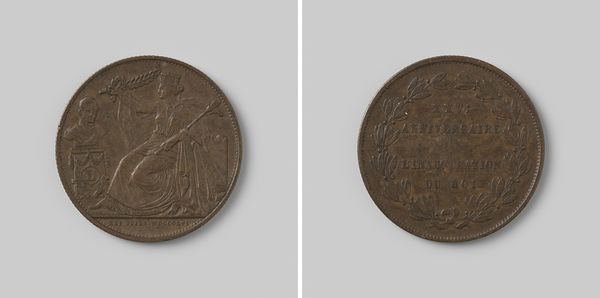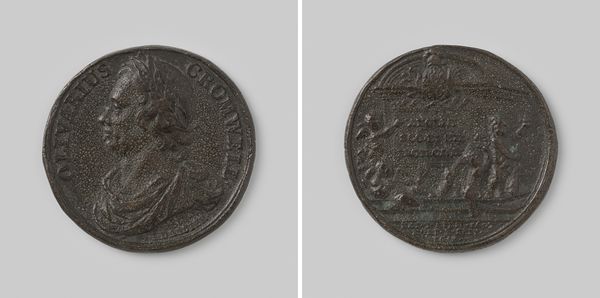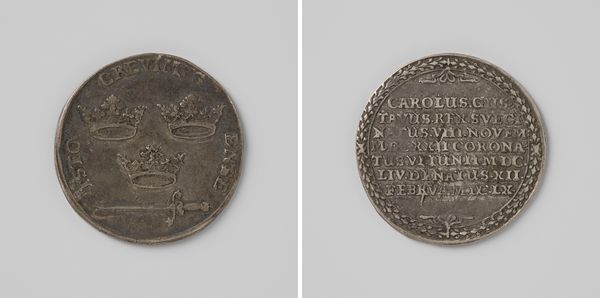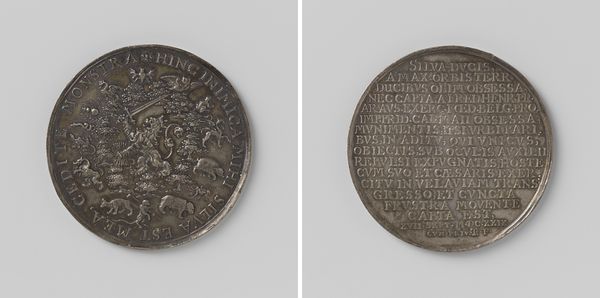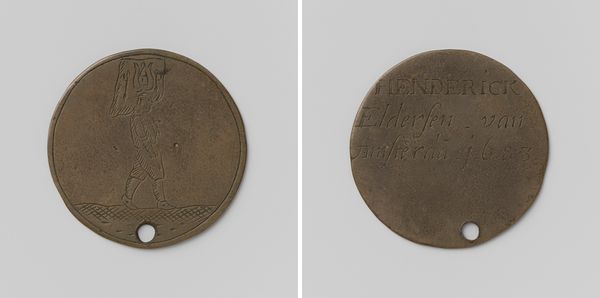
Hulde van de Leidse jonkvrouwen aan de Leidse studenten uitgetrokken naar België 1831 (ijzeren afgietsel) 1831
0:00
0:00
relief, bronze, sculpture
#
portrait
#
neoclacissism
#
relief
#
bronze
#
sculpture
#
history-painting
Dimensions: diameter 3.3 cm, weight gr
Copyright: Rijks Museum: Open Domain
Curator: Let’s have a look at this iron cast relief dating from 1831 by David van der Kellen. It's titled "Homage of the Leiden Maidens to the Leiden Students Departed for Belgium 1831." Quite a mouthful, isn’t it? Editor: Indeed! My first impression is of its solemnity and rather archaic classicism. Given the events it depicts, the severe Neoclassical style seems quite appropriate, lending the whole scene a sense of serious historical import. Curator: Agreed. The piece commemorates the departure of Leiden students to support Belgium during a period of upheaval. I'm struck by how the artist chose to immortalize this moment in such a tactile medium. What I find fascinating is the shift from the preciousness associated with bronze artworks towards this use of the rough, mass-produced medium of cast iron in celebration of their efforts. Editor: I see that completely, and I’d like to build on that by adding that this work resonates on a deeper level when we consider it within the broader context of the Belgian Revolution. This act of solidarity and the subsequent artistic representation both speak volumes about Dutch identity and intellectual circles at the time. The romanticizing of sacrifice and patriotism here can't be separated from that. Curator: Certainly. The material here becomes a deliberate choice, imbuing the subject matter with a very industrial, practical connotation. You’re exactly right; that ties directly into its commemorative function for a very specific social context. The piece uses material as message! Editor: Absolutely, it’s important to highlight the symbolic implications related to that time period—the idea of heroic, masculine duty is central, and this small token serves as an emblem of nationalistic pride and solidarity in a time of turmoil. These bronze tokens are interesting primary resources for studying how gender and politics intersected with artmaking during this transformative historical period. Curator: So well said. Analyzing this piece forces us to remember it is also a functional piece, and really allows us to meditate on the interplay between materiality, commemorative function, and social history! Editor: Right, exactly. Ultimately, analyzing this work really illuminates broader socio-political dimensions through art!
Comments
No comments
Be the first to comment and join the conversation on the ultimate creative platform.
